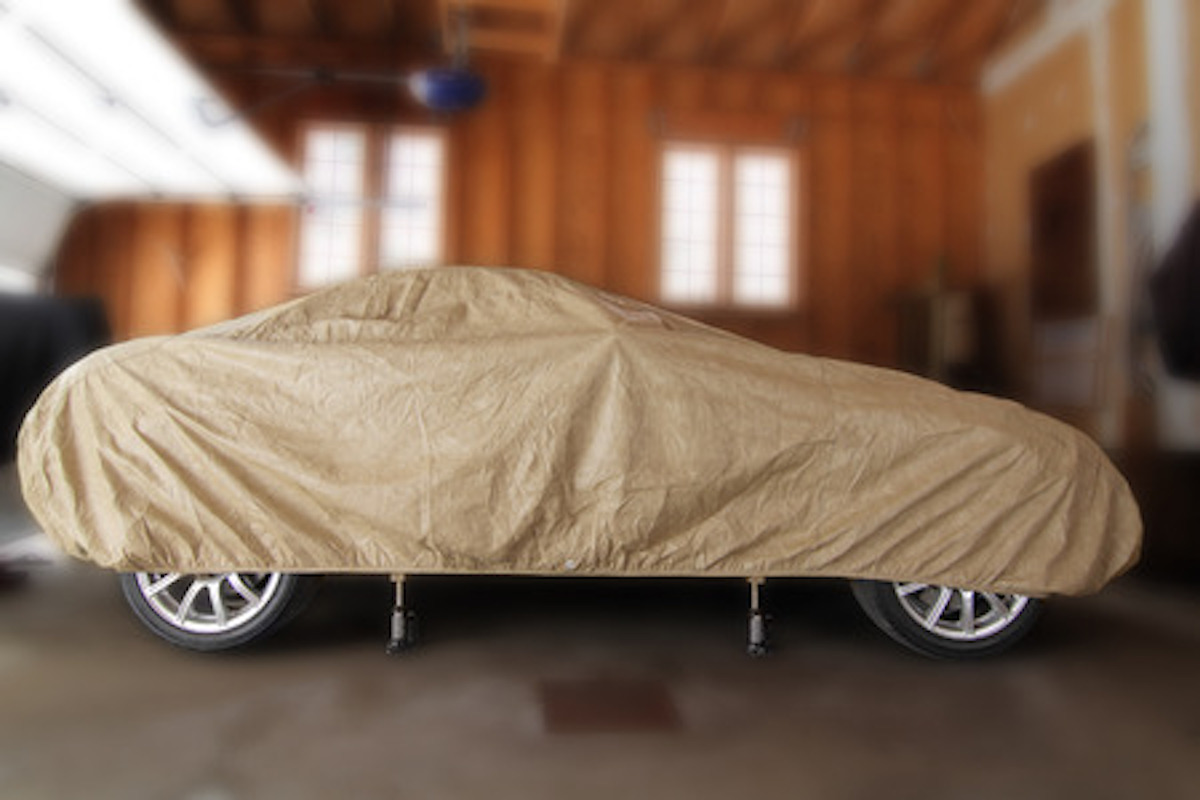If drivers ever need to store their vehicle for a longer period of time, be it several weeks, several months, or longer than that, there are a few precautions to consider for keeping the vehicle in the best possible shape. From tires, internal equipment, to paint, many of a car’s components can suffer damage if they aren’t protected. To get an idea of what this storage process entails, follow the steps below and become fully acquainted before prepping a vehicle for long-time storage.
Where to Store Vehicles
Car owners have many options available to them when it comes to vehicle storage, some of which might be determined by where a person lives – the city, the suburbs, etc. – while others might be dictated by the length of time they will be away from their vehicles. Some possibilities include the following:
- Home garage: For drivers whose homes have garages, storage in a home garage is the surest way to safeguard a vehicle from pests, thieves, and the elements when all garage entry ways are secured, including other doors or any windows.
- Family or friends: If drivers don’t have their own garages, they might try seeing if a close friend or family member has any space for storing a vehicle while its owner is away.
- Storage facility: For those who don’t have immediate access to any enclosed spaces, there is always renting space with one of a number of storage facilities. As well, such businesses may have outdoor and indoor options available depending on the region’s weather.
Washing and Vacuuming
Before storing a vehicle, drivers must ensure it’s been cleaned thoroughly. Even minimal amounts of water droplets, sand, salt from the air or road, or bird droppings can do considerable damage to a car’s paint job long term. It’s best that the vehicle is washed carefully, dried thoroughly, and waxed properly before it’s put away for an extended period. For inside the car, vacuum up every crumb you can find to keep from attracting rodents or insects. Some experts also suggest setting several mothballs or dryer sheets inside the vehicle to dissuade pests.
Prepping Tires
When cars sit too long, flat spots might occur due to air gradually releasing and the car’s weight pressing the tires down. Before leaving a car in storage, experts recommend inflating tires to their maximum pressure, which is listed on the tires’ sidewalls, to account for lost pressure. It’s also recommended to place stored vehicles on jack stands to prevent flat spots—if a garage has a dirt floor, place jack stands onto even wooden squares to prevent sinking. As well, check tire pressure once a vehicle is taken out of storage to ensure the tires are inflated enough.
Gas, Fluids, and Power
For extended storage, taking the following steps is also recommended for drivers to ensure their vehicles are protected:
- Clean oil and change filter: Contaminants within used oil could cause damage to a vehicle’s engine, so remember to change out the oil to ensure it’s clean before storing a vehicle as well as putting in an unused air filter.
- Top coolant off: For this step, ensure the right balance of coolant and water is used for the engine.
- Fill up gas tank: Full gas tanks keep moisture from getting trapped in a car, which could put additional strain on your valves. Using a fuel stabilizer as well could help for multiple months of storage, but add this before filling the gas tank.
- Remove battery: If a car is stored for more than a couple months, the battery could lose its charge and corrode. If drivers opt to remove their batteries, keep them in a temp-controlled area, such as the home, on a dry, clean surface to prevent cracks.
Properly Covering the Vehicle
Stored vehicles should be covered, even inside a garage and definitely when stored outdoors. For humid climates, breathable covers would be best for keeping out moisture. Before covering a vehicle, drivers should do the following:
- Put the car in park without setting the parking break.
- Shut all doors and windows.
- Remove all valuables.
- Safely store registration, insurance, and other important paperwork inside the glove compartment.
- To avoid sticking, remove the windshield wipers.
- Plug the car’s exhaust pipe to keep pests and dust out.
While it may depend on storage time and the climate, car jackets are also something to consider, as the extra layer offers more protection against pests, dust, and moisture. Also, on a final note, some auto experts have stated that starting a vehicle up every now and then can help maintain it better, though a vehicle that is stored properly shouldn’t need this extra step.
Think you or someone you know is in need of Behind the Wheel Training? Training Wheels is an Atlantic City driving school specializing in teaching new teen drivers how to stay safe on the road. For more information on our lessons, please click here.
Copyright: rambleon / 123RF Stock Photo

